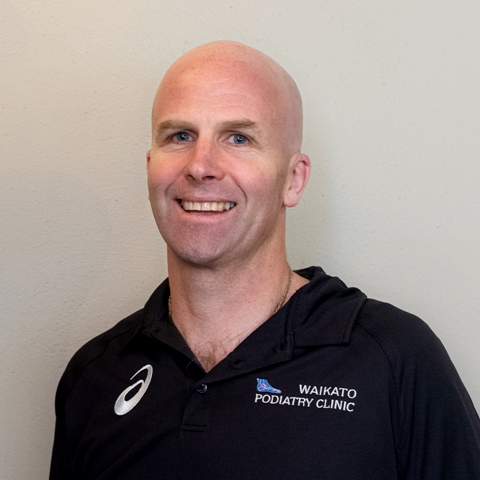Causes of Forefoot Pain
There are numerous causes of forefoot pain. The following are some of the more common conditions that we see.
Morton’s Neuroma
A neuroma is a growth of nerve tissue fibres in the forefoot. A Morton’s neuroma is a thickening of the nerve tissue that occurs in between the toes most frequently caused by irritation, compression, poor fitting shoes and tight footwear. At Waikato Podiatry we are trained with techniques to assess and determine whether you are suffering from a Morton’s neuroma.
Treatment involves accurate diagnosis and a customised treatment plan for each individual. This often involves specific stretches, footwear advice, corrective support where and when required as well as cushioning for pain relief.
Sesamoiditis
This condition is typified by inflammation of two small bones under the big toe joint. Causes of this condition include squashing the big toe on hard surfaces, or sports and activities that involve frequent and excessive bending back of the big toe.
Capsulitis
A capsulitis is an inflammation of the joint capsule which occurs where the toes join the foot. Symptoms involve pain like “walking on a stone”. We may also see corns around the region. When touching the area there is pain and there may be localised swelling and redness in the region. These conditions often occur from footwear that increases pressure underneath the front of the foot and force the big toe against the smaller second toe making it out of alignment with the rest of the toes.
Bursitis
Pain and inflammation of the small cushions between the bones is known as bursitis. Once again poor foot alignment and jamming the foot into tight shoes can cause this.
Plantar plate injury/rupture
On the bottom of each small toe joint there is a ligament between the base of the toe and the metatarsal behind the joint. This ligament is called the plantar plate which acts to keep the toe and the joint from elevating out of alignment. When walking, the toes will bend at the base of the toe joint just before the foot pushes off the ground. The plantar plate holds the toe in place and brings the toe back straight. There is no muscle associated with this ligament. In some cases this ligament can become overstretched or tear causing pain and deformity to the toe leading to a gradual dislocation of the toe. Our treatments include taping, padding, insole modifications and orthotic devices aimed at realigning the forefoot. If conservative therapies fail, we can make the appropriate referral for orthopaedic input aimed at the repair of the plantar plate and associated ligaments.


I get these Extreeme stabbing shock type pains in my soft tissue area from below the bunion bone, to the inner area in front of the ankle, on both feet. (always in this same place) I did have a bunion removed approximately 15 years ago but it happens on both feet, and I do try to choose wide shoes that are comfortable.
As this is not always occurring, just a couple of times a day, but Very painful at the time: and I know doctors are busy; AND I must expect problems at 75 years old, is this something someone can make go away?
Hi Gael, Thank you for your query. This is certainly something we can help with. It is almost certain it is not age related. I would suggest coming in to see one of our Podiatrists and we can take a look and come up with the correct resolution for you. Please phone us on 07 838 0003. Thank you! -Baylee (Waikato Podiatry Receptionist)